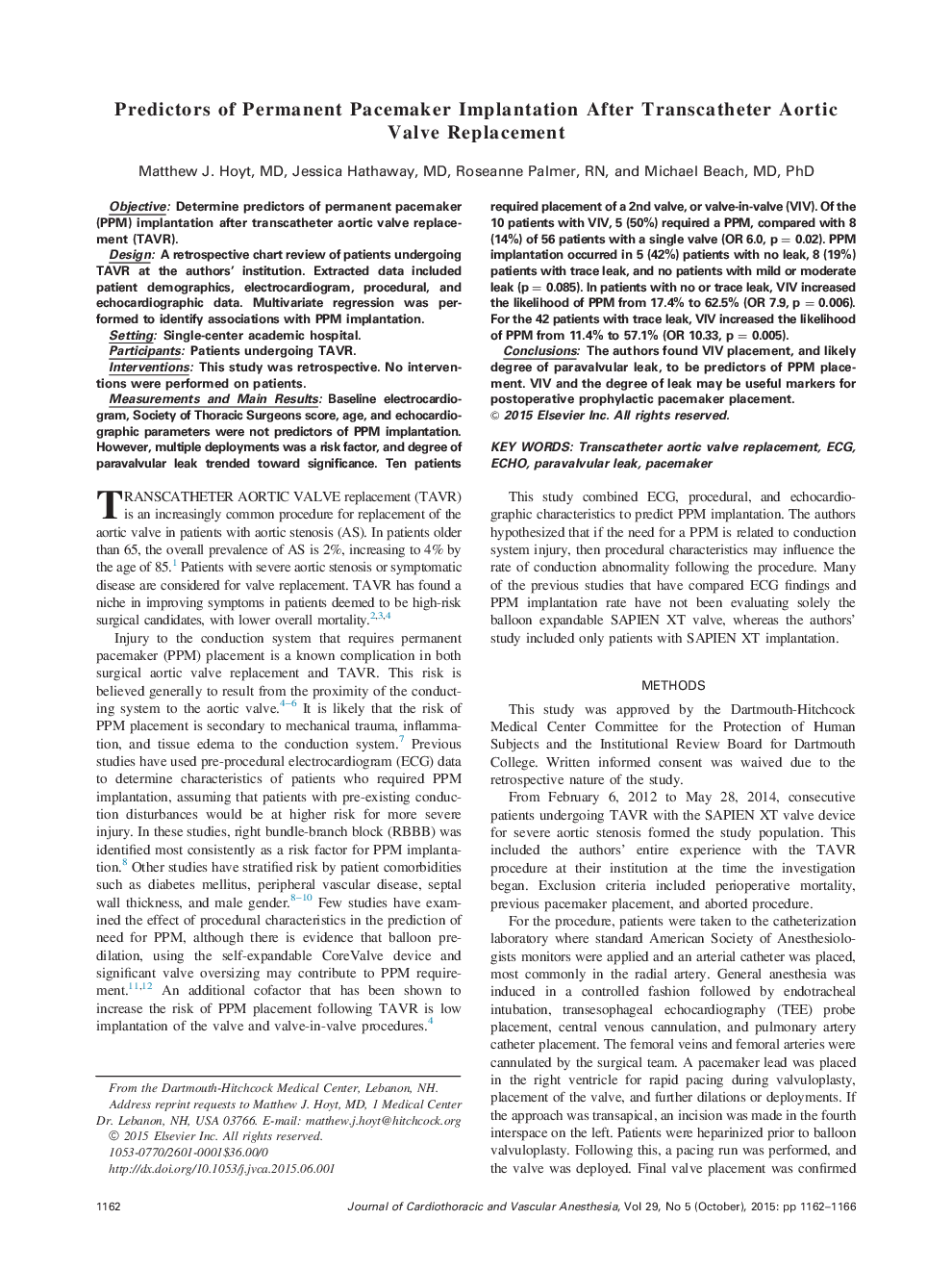| Article ID | Journal | Published Year | Pages | File Type |
|---|---|---|---|---|
| 2759344 | Journal of Cardiothoracic and Vascular Anesthesia | 2015 | 5 Pages |
ObjectiveDetermine predictors of permanent pacemaker (PPM) implantation after transcatheter aortic valve replacement (TAVR).DesignA retrospective chart review of patients undergoing TAVR at the authors’ institution. Extracted data included patient demographics, electrocardiogram, procedural, and echocardiographic data. Multivariate regression was performed to identify associations with PPM implantation.SettingSingle-center academic hospital.ParticipantsPatients undergoing TAVR.InterventionsThis study was retrospective. No interventions were performed on patients.Measurements and Main ResultsBaseline electrocardiogram, Society of Thoracic Surgeons score, age, and echocardiographic parameters were not predictors of PPM implantation. However, multiple deployments was a risk factor, and degree of paravalvular leak trended toward significance. Ten patients required placement of a 2nd valve, or valve-in-valve (VIV). Of the 10 patients with VIV, 5 (50%) required a PPM, compared with 8 (14%) of 56 patients with a single valve (OR 6.0, p = 0.02). PPM implantation occurred in 5 (42%) patients with no leak, 8 (19%) patients with trace leak, and no patients with mild or moderate leak (p = 0.085). In patients with no or trace leak, VIV increased the likelihood of PPM from 17.4% to 62.5% (OR 7.9, p = 0.006). For the 42 patients with trace leak, VIV increased the likelihood of PPM from 11.4% to 57.1% (OR 10.33, p = 0.005).ConclusionsThe authors found VIV placement, and likely degree of paravalvular leak, to be predictors of PPM placement. VIV and the degree of leak may be useful markers for postoperative prophylactic pacemaker placement.
